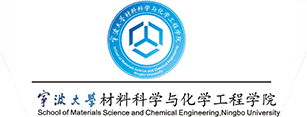Time: April 30, 2024, 9:00 am
Venue: Room 227, No.1 Laboratory Building, North District, School of Materials and Chemistry
Lecturer: Wang Changhong
Abstract:
All-solid-state batteries have attracted much attention due to their inherent safety and high energy density . However, its development also faces some key challenges, such as insufficient ionic conductivity of solid-state electrolyte, interfacial chemistry-electrochemistry-mechanics coupling failure, and immature engineering process of electrodes and cells. In recent years, we have been focusing on the research of ion transport properties of all-solid-state batteries at multiple levels of “material-interface-device”, and have achieved systematic research results. At the material level, we have developed the “ammonium-assisted” universal aqueous phase synthesis method, proposed the “ion and vacancy concentration balance” design criterion , regulated the ionic conduction in the bulk phase, and realized the high ionic conductivity of the new halide electrolyte and the 100-kilogram-scale preparation of the new halide electrolyte. At the interfacial level, based on the interfacial self-limiting chemical mechanism, we have constructed interfacial fine structures , realized efficient interfacial charge transport, and revealed the failure mechanism of “soft short circuit” in solid-state batteries ; At the device level, we have established a multi-physics mathematical model for solid-state soft-packed batteries, which can accurately estimate the energy density of solid-state batteries. At the device level, a multi-physics mathematical model has been established, which can accurately estimate the energy density of solid-state cells; and a solvent-free dry electrode technology has been developed based on the principle of PTFE proto-fibrillation , which has constructed an ampere-hour-grade solid-state soft-packed electric cell. These works provide theoretical basis and technical support for the development of new halide-based all-solid-state battery technology.



